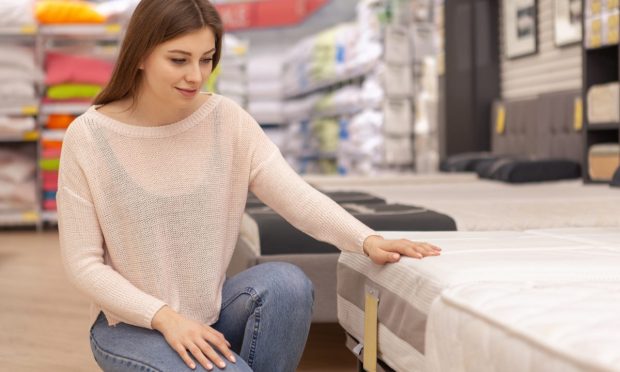Touch This, Look at That: Why Ikea and Other Retailers Are Going Little and Local

Life may get a bit easier for urban, suburban and rural consumers alike who want to shop at a big-box retailer for big-ticket items like furniture.
Big retail ideas often come in small retail footprints. Case in point: Some of the world’s largest retailers have been trying out an innovative store concept lately — the mini-store. Chains like Target, Nordstrom and Bloomingdales, have all been opening up mini-stores.
This move is aimed at offering a shopping experience that is usually better in person — like if someone is looking to refurnish a bedroom in the city and wants to see and touch the actual items they’re about to buy, and also see different items put together into a similarly-sized room before their eyes. This little and local trend is also being deployed by some grocery stores too.
There is a benefit to this mini store model versus the online shopping experience. Namely, improved consumer interaction and communication where going face-to-face helps consumers make smarter purchasing decisions. For example, Ikea first opened a planning studio last spring in New York City to help consumers figure out how to decorate their apartments. This store — a modest 17,000 square feet compared to the more than 200,000-square-foot standard Ikea — specialized in urban-dwelling challenges like how to best maximize smaller living space.
“We conducted extensive research about city living, and we believe New Yorkers will see their needs reflected [in] this new concept,” Ikea said in a statement.
The showroom was pre-furnished (kind of like a flagship Ikea), but in this case, the rooms were similar to typical city apartments versus larger suburban homes.
Ikea has since opened 30 new planning studios across the U.S., but not all of them have performed well. For instance, earlier this month, Ikea announced it was closing one of its New York City planning studios, citing low foot traffic.
In the meantime, Ikea plans to open another New York City location soon, as it ultimately wants consumers to be within a 30-minute travel distance, so consumers don’t have to make a big trek to visit a store. In these mini-stores, consumers can walk in without an appointment and chat with design specialists to decide what kind of furniture best suits their spaces. Then, they can have whatever they’d like to buy delivered.
Last month, Ikea opened a home design service in Ireland where consumers can get free design advice and discuss what their next big kitchen upgrade should look like. Ireland is one of eight global markets in which these services are being tested.
Said Ikea, this model allows employees to understand consumer feedback and lets Ikea stores move closer to consumers without consumers having to come to them.
This spring, Ikea plans to open additional stores in Los Angeles where consumers can get design support — and delivery guidance — from real live experts.
“Understanding that many L.A.-area residents are often frustrated by being stuck in traffic, we identified geographic areas in the market that are beyond a 30-minute drive from existing stores and where affinity to Ikea is extremely high,” IKEA U.S. Area Vice President Janet McGowan said in a statement last month. “By opening the two planning studios in the L.A. market, we are taking the first steps to create customer meeting points that are more accessible and convenient to the many people of the L.A. market while continuing to offer smart and affordable home solutions.”
Ikea said this decision is part of a bigger initiative to update service offerings, like lowering shipping and delivery costs and offering TaskRabbit assembly services so consumers don’t spend more time putting together their furniture than they do buying it.
Tiny Stores, Big Opportunities
This spatial rethink is perhaps just one of many strategies to thrive amidst supply chain hiccups. For instance, as PYMNTS reported in October, Ikea suffered last fall from an inventory hit in which products stored in warehouses were not moving. Ikea said it expects stock shortages to continue for another year, so presumably anything that can get customers seeing and touching the goods would help.
Read more: Ikea Facing Long-Term Stock Shortage
Regarding other Ikea developments, last year, Ikea began a global buyback program in Great Britain, which it piloted last August outside of Philadelphia, with plans to do so in additional U.S. locations. This is arguably a very hot market, as some $36 billion worth of reCommerce or secondhand merchandise changed hands within the past year.
See more: IKEA Launches Furniture Buyback, Emergence of Micro-Influencers, Amazon and Walmart Boost BNPL
As PYMNTS reported last fall, one key problem with the buyback program involved the resale of things like bookcases, tables, desks and chairs. Finding a way to move and ship fully assembled furniture that consumers can’t move themselves versus flat-pack boxes was difficult.
Read more: Ikea To Pilot Furniture Buyback, Secondhand Sales
Key Takeaway
To be sure, where challenges loom, new opportunities also exist. In this case, the seemingly normal desire of consumers to see and touch major purchases before buying them could prove to be a spark, not only for omnichannel innovation and adaptation, but as a catalyst for other retailers to think small and look at the little picture.
